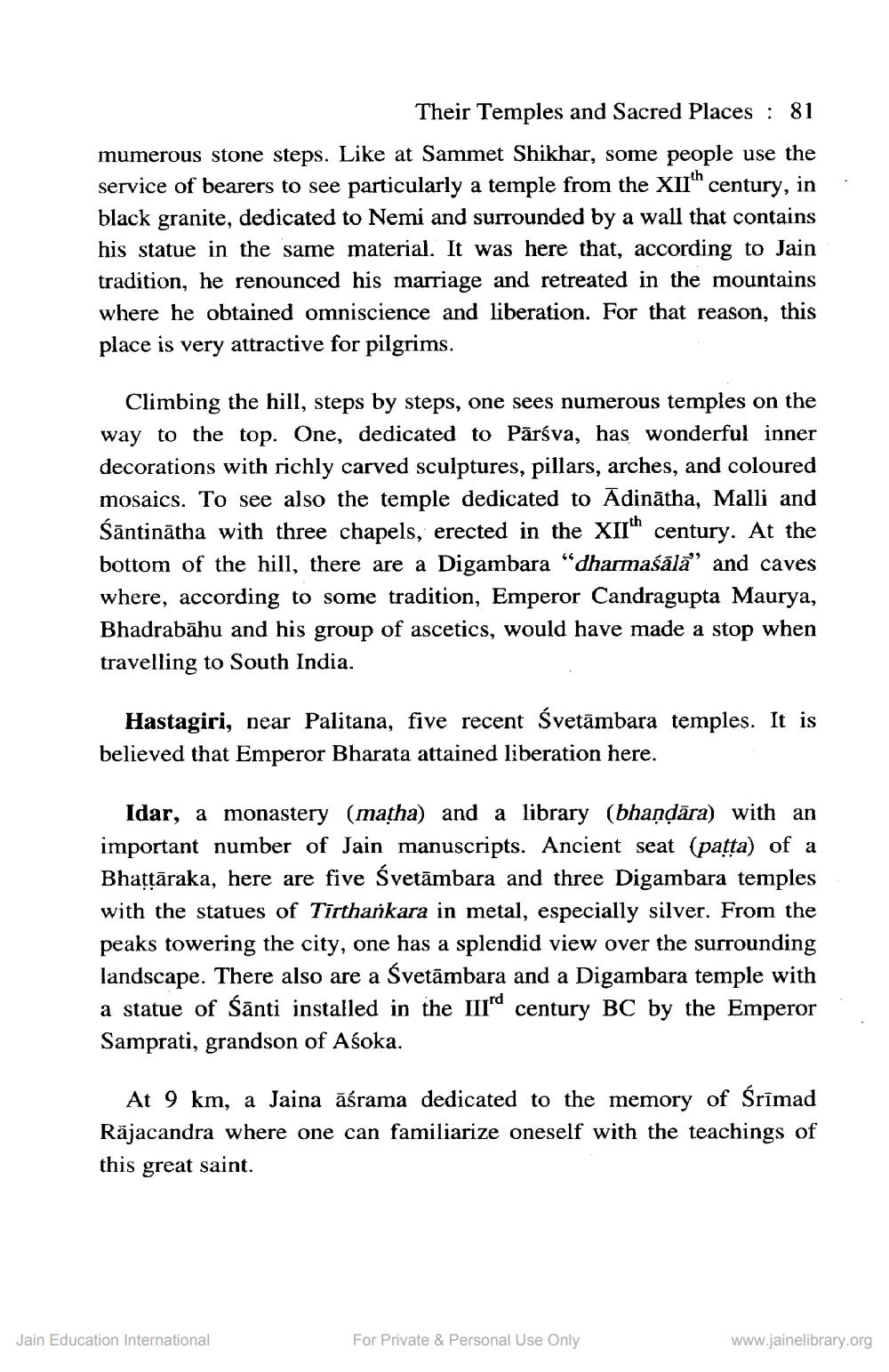________________
Their Temples and Sacred Places : 81 mumerous stone steps. Like at Sammet Shikhar, some people use the service of bearers to see particularly a temple from the XIIth century, in black granite, dedicated to Nemi and surrounded by a wall that contains his statue in the same material. It was here that, according to Jain tradition, he renounced his marriage and retreated in the mountains where he obtained omniscience and liberation. For that reason, this place is very attractive for pilgrims.
Climbing the hill, steps by steps, one sees numerous temples on the way to the top. One, dedicated to Pärśva, has wonderful inner decorations with richly carved sculptures, pillars, arches, and coloured mosaics. To see also the temple dedicated to Adinatha, Malli and Śantinatha with three chapels, erected in the XIIth century. At the bottom of the hill, there are a Digambara "dharmasala" and caves where, according to some tradition, Emperor Candragupta Maurya, Bhadrabahu and his group of ascetics, would have made a stop when travelling to South India.
Hastagiri, near Palitana, five recent Śvetambara temples. It is believed that Emperor Bharata attained liberation here.
Idar, a monastery (matha) and a library (bhaṇḍāra) with an important number of Jain manuscripts. Ancient seat (paṭṭa) of a Bhaṭṭāraka, here are five Śvetämbara and three Digambara temples with the statues of Tirthankara in metal, especially silver. From the peaks towering the city, one has a splendid view over the surrounding landscape. There also are a Svetambara and a Digambara temple with a statue of Śanti installed in the IIIrd century BC by the Emperor Samprati, grandson of Aśoka.
At 9 km, a Jaina āśrama dedicated to the memory of Śrīmad Rajacandra where one can familiarize oneself with the teachings of this great saint.
Jain Education International
For Private & Personal Use Only
www.jainelibrary.org




